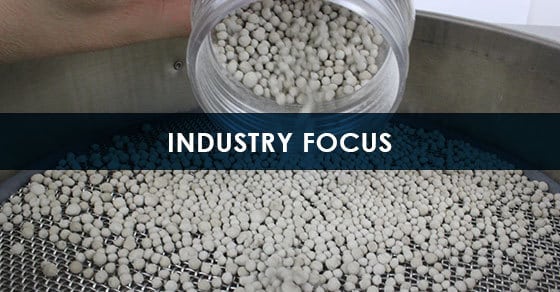In processing limestone for its many uses, drying and pelletizing (agglomeration) are frequently employed to bring about the characteristics necessary for its intended role, be it in construction, agriculture, or otherwise. But with significant variation between sources, limestone feasibility testing and process development are often critical to meeting process and product objectives.
What follows is an inside look at how limestone producers use the FEECO Innovation Center to develop new processes, improve their products, and evaluate changes to their existing lines.
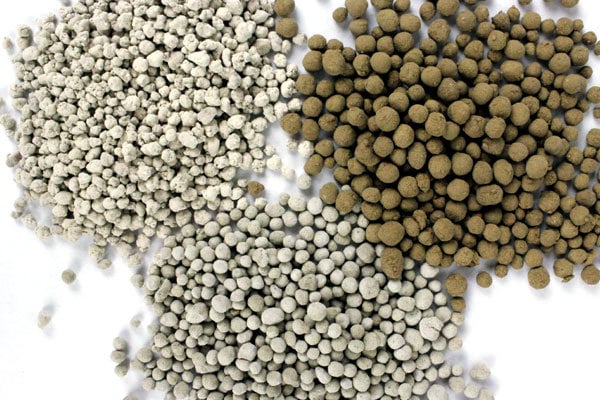
Limestone pellet samples produced during testing in the FEECO Innovation Center
When Limestone Process Development Is Necessary
Limestone sources exhibit incredible variation in chemical and physical composition, making nearly each source, whether naturally made or produced as a by-product, unique in terms of contaminants and co-constituents, moisture content, material consistency, and more.
This variation causes each source of limestone to behave differently, sometimes creating challenges during drying and/or pelletizing. For this reason, limestone process development is an incredibly valuable tool in de-risking projects in several settings:
Developing a New Process
Testing in a facility such as the FEECO Innovation Center is especially helpful when developing a new process. Through the Innovation Center, producers are able to confirm feasibility of the intended process with a representative sample of the source material, determine the best equipment configuration, and gather the process data necessary for scale-up, significantly de-risking the path to commercialization.
Improving Existing Products
Market demands are constantly changing, with requirements for more specialized products and increased grades on the rise, leaving limestone producers to adapt or fall behind.
Through testing, producers are able to test out the inclusion of different additives or coatings, as well as changes to particle characteristics such as crush strength, particle size distribution, bulk density, and more.
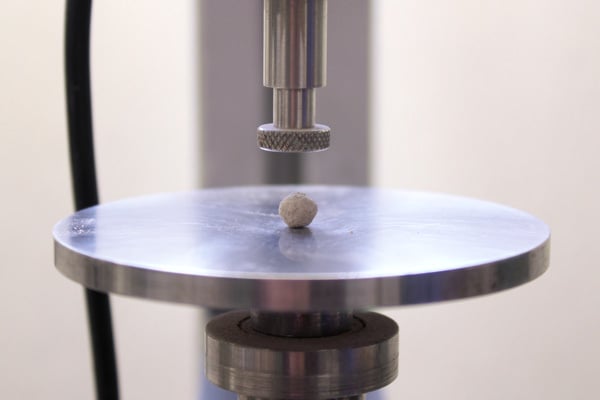
Limestone crush strength test being conducted in the FEECO Innovation Center
Evaluating Changes to an Existing Production Line
For these same reasons, as well as to improve efficiency, lower operating costs, and other process objectives, producers also find the Innovation Center helpful in assessing potential changes to an existing process.
Producers can utilize the Innovation Center as a test environment to evaluate changes such as increased production, modifications to equipment, changes in feedstock or process parameters, and even the addition of a new step such as preconditioning to the process, all without any risk to the live production environment.
Types of Testing Available for Limestone in the FEECO Innovation Center
Limestone producers have an array of equipment and process capabilities around drying and pelletizing available to them in the Innovation Center.
The facility can test various types and forms of limestone, including:
- Calcitic lime
- Dolomitic lime
- Chalk
- Limestone filter cake
- Limestone dust
Drying
Drying is an essential aspect of processing limestone, both as a form of pretreatment and as a post-agglomeration step to dry pellets.
Drying Limestone as a Pretreatment Step
Drying is used as a pretreatment step to reduce shipping costs and prevent limestone from clogging downstream processing equipment.
Drying Limestone Pellets After Agglomeration
Since the pelletizing process typically uses a liquid binder to form pellets, drying is necessary after pelletizing to essentially “cure” pellets into their final form. This creates a stable, durable product, and helps to prevent issues such as mold growth and caking.
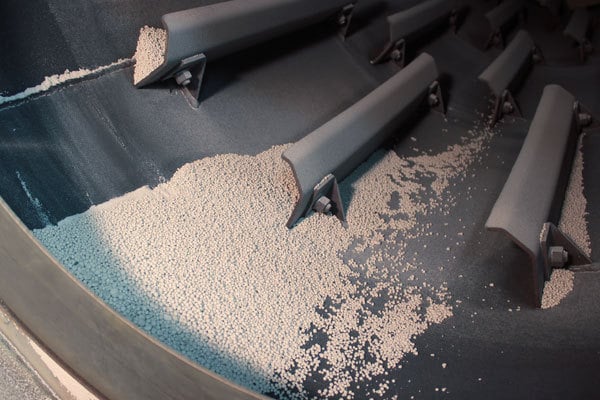
Dryer testing in the FEECO Innovation Center
In both settings, producers are often looking to reach a specific percentage or range of acceptable moisture content.
Testing allows them to determine the process and feedstock parameters required to reach the desired moisture content. It also helps to better estimate the associated processing costs such as energy and fuel consumption and off-gas treatment requirements. Other key variables gathered through testing include:
- Dryer retention time
- Flight design and pattern
- Drum slope
- Drum speed
Available Testing Equipment for Limestone Drying
The following equipment is available for dryer testing in the Innovation Center:
- Continuous Rotary Dryer
- Flight Simulator
- Fluid bed dryer
Pelletizing/Agglomeration
Pelletizing, a form of agitation agglomeration in which dust and fines are converted to a granular product, is widely used to improve the handling and application characteristics of limestone, particularly when it will be used as a soil amendment.
Depending on the product goals, pelletizing may be carried out in a granulation drum, pin mixer, disc pelletizer, or combination thereof. The most common approach uses a combination of the pin mixer and disc pelletizer, in which the pin mixer serves to homogeneously mix the binder and feedstock (along with any additives) and form seed pellets that can then be grown via layering (coalescence) on the disc pelletizer.
Mixing, which is sometimes used to condition limestone filter cake or homogeneously blend limestone with other liquid or solid feeds, can also be tested in the facility.
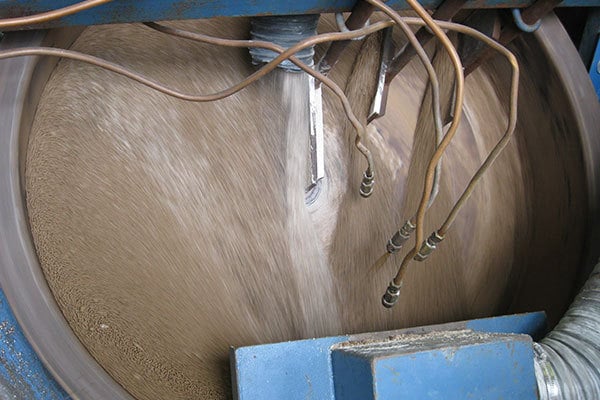
Testing in progress on a disc pelletizer in the FEECO Innovation Center
Available Testing Equipment for Limestone Pelletizing
The following equipment is available for testing various agglomeration objectives in the Innovation Center:
- Batch Disc Pelletizer
- Batch Pin Mixer
- Continuous Disc Pelletizer
- Continuous Pugmill Mixer (Paddle Mixer/Pug Mill)
- Continuous Pin Mixer
- Continuous Coating Drum
- Continuous Granulation Drum
Continuous Process Loop Testing
One of the major advantages to working with the FEECO Innovation Center is that in addition to testing single pieces of equipment, we also offer continuous-loop testing incorporating both agglomeration and drying. This is especially useful for soil amendment producers, as they can test the full pelletizing line before making any investment in their own plant.
Limestone Characteristics
Developing a process to meet precise product quality parameters is often an essential part of testing. Through the Innovation Center, limestone producers are able to target a range of product characteristics during the testing process. Depending on the type of testing, this might include:
- Attrition
- Bulk density
- Compression
- Crush strength/Hardness
- Flowability
- Green/Wet strength
- Moisture content
- Particle size distribution
- Solubility
- Temperature
These parameters are met by adjusting process variables during testing to define the “recipe” that achieves the desired results.
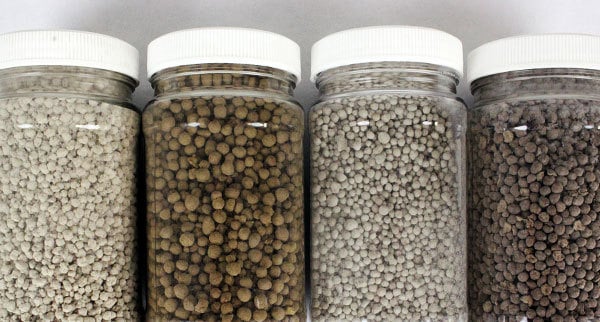
Limestone pellet samples produced via testing in the FEECO Innovation Center
Conclusion
Feasibility and process development testing are essential to meeting the changing demands of the limestone industry. With more than 70 years of experience, the FEECO Innovation Center has both the knowledge and equipment to help limestone producers meet their precise process and product goals, whether developing a new process, improving on a product, or making changes to an existing process.
In addition to testing services, FEECO is also the limestone industry’s preferred provider for custom drying and pelletizing equipment, as well as parts and service support, including process audits and training for existing limestone pelletizing operations. For more information on how we can help your limestone project succeed, contact us today!

